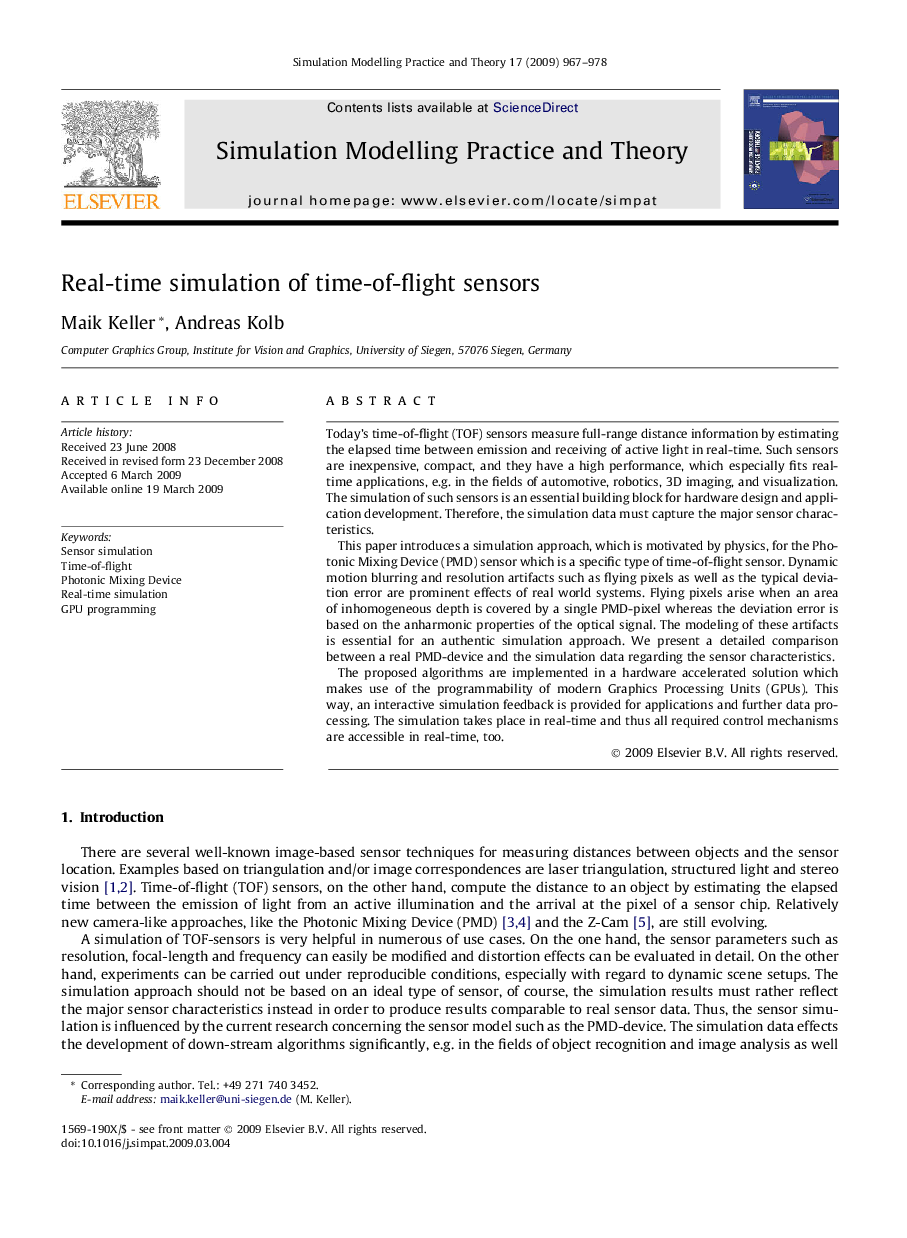| Article ID | Journal | Published Year | Pages | File Type |
|---|---|---|---|---|
| 492386 | Simulation Modelling Practice and Theory | 2009 | 12 Pages |
Today’s time-of-flight (TOF) sensors measure full-range distance information by estimating the elapsed time between emission and receiving of active light in real-time. Such sensors are inexpensive, compact, and they have a high performance, which especially fits real-time applications, e.g. in the fields of automotive, robotics, 3D imaging, and visualization. The simulation of such sensors is an essential building block for hardware design and application development. Therefore, the simulation data must capture the major sensor characteristics.This paper introduces a simulation approach, which is motivated by physics, for the Photonic Mixing Device (PMD) sensor which is a specific type of time-of-flight sensor. Dynamic motion blurring and resolution artifacts such as flying pixels as well as the typical deviation error are prominent effects of real world systems. Flying pixels arise when an area of inhomogeneous depth is covered by a single PMD-pixel whereas the deviation error is based on the anharmonic properties of the optical signal. The modeling of these artifacts is essential for an authentic simulation approach. We present a detailed comparison between a real PMD-device and the simulation data regarding the sensor characteristics.The proposed algorithms are implemented in a hardware accelerated solution which makes use of the programmability of modern Graphics Processing Units (GPUs). This way, an interactive simulation feedback is provided for applications and further data processing. The simulation takes place in real-time and thus all required control mechanisms are accessible in real-time, too.
